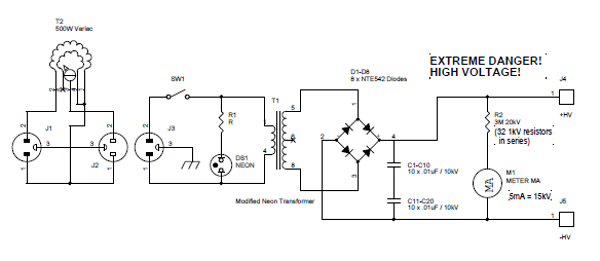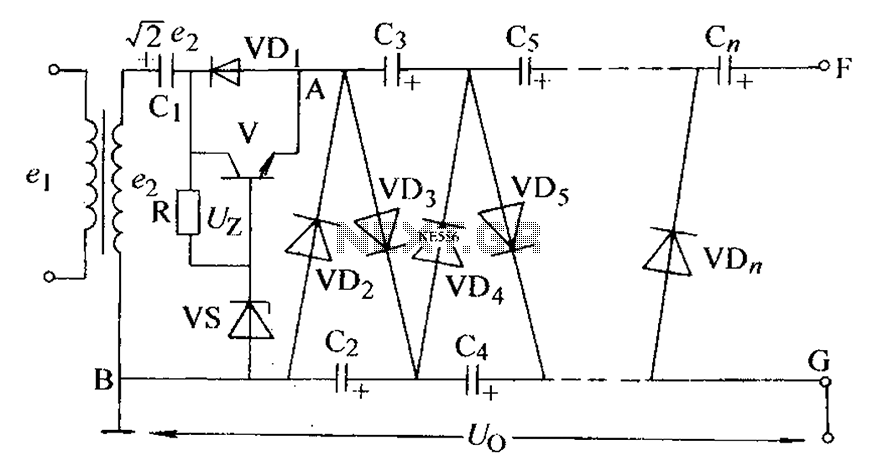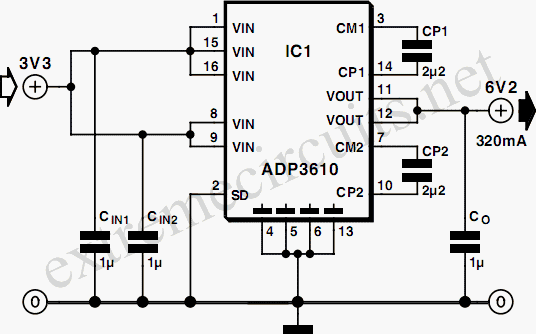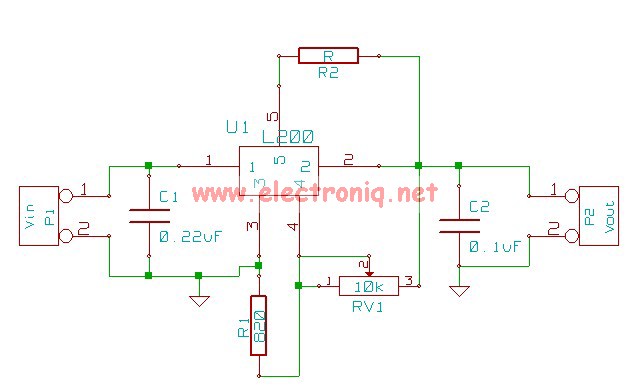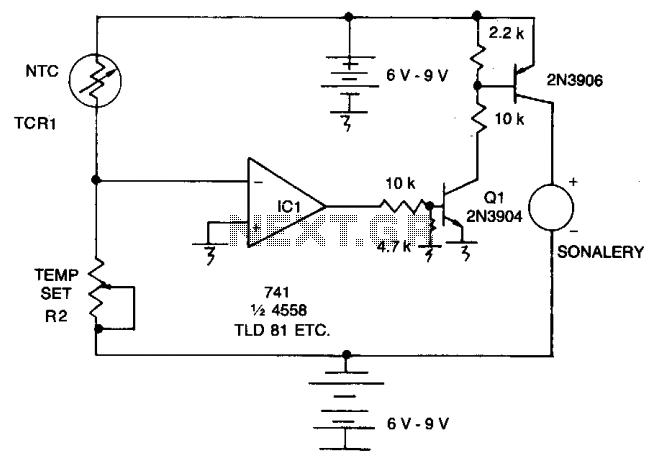
Adjustable output regulator
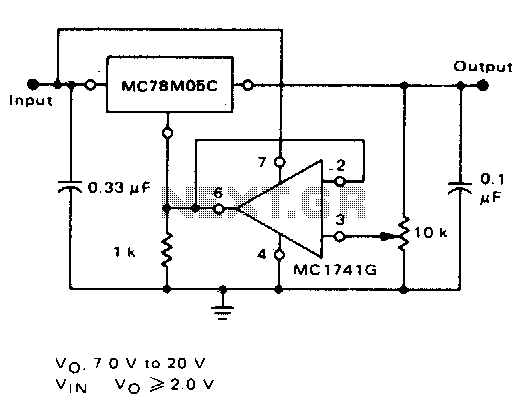
The inclusion of an operational amplifier facilitates the adjustment to higher or intermediate voltage levels while maintaining regulatory characteristics. The minimum voltage achievable with this configuration is 2 volts above the regulator voltage.
The circuit employs an operational amplifier (op-amp) to enhance the functionality of a voltage regulator. The op-amp can be configured in various ways, such as in a non-inverting or inverting configuration, to achieve the desired output voltage levels. By integrating the op-amp, the circuit can dynamically adjust the output voltage, allowing for a range of voltages that exceed the standard output of the regulator.
In this setup, the op-amp monitors the output voltage and compares it to a reference voltage. If the output voltage deviates from the desired level, the op-amp adjusts the control signal sent to the regulator, thereby fine-tuning the output. This feedback mechanism is crucial for maintaining stability and accuracy in the output voltage.
The design also specifies that the minimum output voltage from this arrangement is 2 volts higher than the voltage provided by the regulator alone. This characteristic ensures that the circuit can provide a higher voltage range, which may be necessary for specific applications requiring elevated voltage levels without sacrificing the regulation performance.
In practical applications, the choice of op-amp and its configuration will depend on factors such as bandwidth, slew rate, and power supply requirements. Proper selection and implementation of the op-amp will enhance the overall performance of the voltage regulation system, ensuring reliable operation under varying load conditions.The addition of an operational amplifier allows adjustment to higher or intermediate values while retaining regulation characteristics The minimum voltage obtainable with this arrangement is 2 volts greater than the regulator voltage.
The circuit employs an operational amplifier (op-amp) to enhance the functionality of a voltage regulator. The op-amp can be configured in various ways, such as in a non-inverting or inverting configuration, to achieve the desired output voltage levels. By integrating the op-amp, the circuit can dynamically adjust the output voltage, allowing for a range of voltages that exceed the standard output of the regulator.
In this setup, the op-amp monitors the output voltage and compares it to a reference voltage. If the output voltage deviates from the desired level, the op-amp adjusts the control signal sent to the regulator, thereby fine-tuning the output. This feedback mechanism is crucial for maintaining stability and accuracy in the output voltage.
The design also specifies that the minimum output voltage from this arrangement is 2 volts higher than the voltage provided by the regulator alone. This characteristic ensures that the circuit can provide a higher voltage range, which may be necessary for specific applications requiring elevated voltage levels without sacrificing the regulation performance.
In practical applications, the choice of op-amp and its configuration will depend on factors such as bandwidth, slew rate, and power supply requirements. Proper selection and implementation of the op-amp will enhance the overall performance of the voltage regulation system, ensuring reliable operation under varying load conditions.The addition of an operational amplifier allows adjustment to higher or intermediate values while retaining regulation characteristics The minimum voltage obtainable with this arrangement is 2 volts greater than the regulator voltage.
